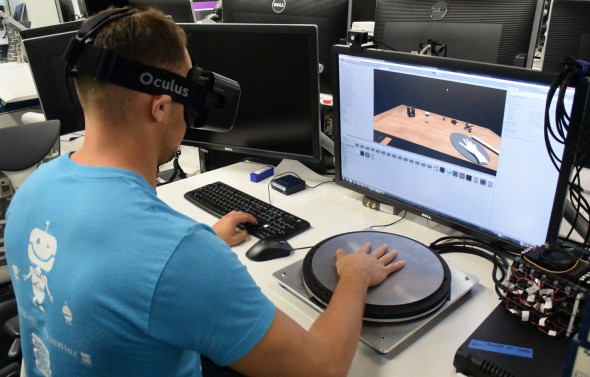Touch’s release draws near, but Oculus itself is far from done with VR input. Next on its checklist? Haptic feedback.
MIT Technology Review is reporting that Oculus is working on a new form of hardware that lets players feel objects and surfaces in the virtual world, but crucially doesn’t rely on gloves. It calls its work HapticWave, consisting of a metal plate that sits on top of a of ring electromagnet actuators. You place your hand in the center of that plate and these actuators then send vibrations to it. With a headset like the Oculus Rift on, paired with proper audio, this helps to trick the brain into thinking you’re really touching something you see in VR.
Key to HapticWave is the direction of those vibrations, which the actuators are able to fine tune in relation to the object the user is interacting with and make them feel more authentic. These vibrations can also vary in frequency to help portray weight in objects hitting other areas in the virtual space. According to Oculus Research Scientist Ravish Mehra, the aim is to “generate this extrasensory input so users can be more perceptive and more believable of virtual objects.”
The company has created a few demos to test its tech already. They include holding your hand on a virtual table as a ball bounces across it, with the object’s proximity to your hand being portrayed through the vibrations. This and other demos will be on display at SIGGRAPH 2016 later this month.
While is undeniably exciting to see Oculus looking so closely at haptic feedback technology, it’s important to remember that this is purely an experimental project right now. We have no idea if this work could ever be turned into a commercial product and, if it does, you can be sure that it will look a whole lot different from a metal plate that you press your hand flat against. That limits the types of VR experiences you could have with it for one, and doesn’t allow you to actually pick up and feel objects for yourself.
The process of translating what Oculus has here to some sort of peripheral would be long and complicated. Fortunately, time and money are two things the company seems to have plenty of.






























